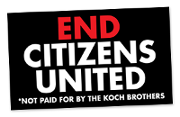Biblio
Filters: First Letter Of Last Name is L [Clear All Filters]
(1981). Language and Linguistics.
(1996). Learn to Earn: A Beginner's Guide to the Basics of Investing and Business.
"Chewing gum and candy companies, such as Wrigley's, can thrive on recessions, because as Mr. Wrigley himself once said: 'The sadder they are, the more the people chew.'" (p. 84)
(1996). Distributed Algorithms.
(1998). When Smart People Work for Dumb Bosses: How to Survive in a Crazy and Dysfunctional Workplace.
"This is not the first time you've heard how an evaluation report mashed the brains of an employee. Why so powerful? It's this. The assessment of performance comes from the one person above all others who can most affect the emotions of an employee, one's supervisor. That changes the meaning of everything. That document can alter reality: Good can become bad, up can become down, and smart become dumb." (p. 135)
(1966). On Aggression.
"Aggression elicited by any deviation from a group's characteristic manners and mannerisms forces all its members into a strictly uniform observance of these norms of social behavior. The nonconformist is discriminated against as an 'outsider' and, in primitive groups, for which school classes or small military units serve as good examples, he is mobbed in the most cruel manner." (p. 79)
(1999). Uncertain Programming.
(2000). Samba Unleashed.
(2005). Crunch Time: 8 Steps to Making the Right Life Decisions at the Right Times.
"Through experience and observation, I've learned and counselled that people who are hostile and belligerent often have developed their 'offensive' posture as a form of defense. These individuals lash out to keep people from further hurting them, possibly discovering and uncovering their vulnerability, and/or from seeing how hurt and rejected they truly feel. Time and again, their defensive behavior is used as a buffer to protect the raw feelings hidden within. In essence, these individuals appear to believe that: 'If I attack you first, I might scare you off, and you won't get to me. Thus, I'm safe for the moment from hurt, disappointment, rejection, etc. Safe from people seeing the truth.'
Another defensive strategy that I deal with on a regular basis is that of withdrawal or apathy. In these cases, individuals appear to withdraw from life and/or appear not to care, in order to conceal their low self-esteem and their intense fear of feeling more rejection and pain. These individuals, in some respects, take the opposite approach in order to protect themselves. They get out of the game altogether. If they don't get up to bat in the game of life, they can't strike out. If they don't put themselves into the contest, they can't be judged—and be rejected. These individuals appear as if—or say—they don't care. But deep down, they care, and once cared—big time. But as a result of past experiences of perceived or real rejection, they've chosen to never let themselves, or their expectations be rejected or dashed again. By withdrawing from it all, they're better safe than sorry." (p. 197)
Another defensive strategy that I deal with on a regular basis is that of withdrawal or apathy. In these cases, individuals appear to withdraw from life and/or appear not to care, in order to conceal their low self-esteem and their intense fear of feeling more rejection and pain. These individuals, in some respects, take the opposite approach in order to protect themselves. They get out of the game altogether. If they don't get up to bat in the game of life, they can't strike out. If they don't put themselves into the contest, they can't be judged—and be rejected. These individuals appear as if—or say—they don't care. But deep down, they care, and once cared—big time. But as a result of past experiences of perceived or real rejection, they've chosen to never let themselves, or their expectations be rejected or dashed again. By withdrawing from it all, they're better safe than sorry." (p. 197)
(1976). New Ways of Managing Conflict.
"The leadership and other processes of the organization must be such as to ensure a maximum probability that in all interactions and all relationships with the organization, each member will in the light of his background, values, and expectations, view the experience as supportive and one which builds and maintains his sense of personal worth and importance." (p. 108)
Likert provided this quote from his book of 15 years earlier, "New Patterns of Management", and refers to it as the most fundamental of all his leadership principles.
Likert provided this quote from his book of 15 years earlier, "New Patterns of Management", and refers to it as the most fundamental of all his leadership principles.
(1978). Control your depression.
"Psychological prevention is a much neglected area. There is so much need for giving services to people who are hurting that we do not take the time to prepare those who are not hurting to live life in effective ways. If we did, we might be able to prevent many from becoming casualties. The savings in therapy time and money—not to mention human suffering—could be enormous. Perhaps some day 'psychological impact statements' will be as familiar to our ears as 'environmental impact statements.'"
(2001). Weaving complexity and business: engaging the soul at work.
356. Abstract
"How then do we begin to generate caring and connected relationships at work? We begin with awareness. We begin by being aware of the world of relationships and by paying as much attention to these micro dynamics in organizations—how they influence social processes and psychological health of individuals—as we currently do to macro issues, such as economic performance and strategies." (p. 305)
(1996). The Rights of People with Mental Disabilities: The authoritative ACLU guide to the rights of people with mental illness and mental retardation.
"A reasonable accommodation is an alteration in the work environment that will enable the employee to perform the essential functions of the job. The accommodation must be practicable and reasonable in terms of cost to the employer and ease of accomplishment; in the words of the ADA, it cannot be an 'undue hardship' to the employer. The accommodation can be physical, such as a ramp up a few steps or and amplification device on the telephone. For people with mental disabilities, the core of reasonable accommodation is an adjustment to the work environment that will enable the person to perform at a productive level. These can include such changes as:
- Flexible scheduling
- Reassignment to a different job
- Changes in the physical location of work
- Alterations in supervision
- Unpaid leave for therapy
- Sensitizing coworkers
(1975). Executive Stress.
"The cost of self-doubt in dollars and frustration is beyond computation. Despite their capacity for zest and spirit, uncounted numbers of people endure what they experience as dead-end traps with quiet desperation. They want to do something bigger and more exciting than what they are doing, but they are either afraid or don't know where to begin. They are trapped by barriers they cannot see and hindered by psychological glasses that distort their perception of themselves. The tragedy of having given up on themselves is that so many could use what seem to be barriers as stepping stones to gratification. Too much self-doubt blinds us to the opportunities around us. Without knowing where to start pulling oneself out of the psychological trap, even the person with considerable self-confidence has difficulty doing so." (p. 74)
(1976). Psychological Man.
"In displacement or substitution, we vent our feelings on a convenient but inappropriate target. This is the attack which follows projection. Scapegoating is just one variation of this mechanism. Managers frequently unload their disappointment in themselves onto their subordinates." (p. 36)
(2006). Harry Levinson on the Psychology of Leadership.
"When people in defeat deny their angry feelings, that denial of underlying, seething anger contributes to the sense of burnout.
If top executives fail to see these problems as serious, they may worsen the situation. If a company offers only palliatives like meditation and relaxation methods—temporarily helpful though they may be—victims of burnout may become further enraged. The sufferers know that their problem has to do with the nature of the job and not their capacity to handle it." (p. 29)
If top executives fail to see these problems as serious, they may worsen the situation. If a company offers only palliatives like meditation and relaxation methods—temporarily helpful though they may be—victims of burnout may become further enraged. The sufferers know that their problem has to do with the nature of the job and not their capacity to handle it." (p. 29)
(1973). The Great Jackass Fallacy.
"People will avoid, evade, escape, deny, and reject both the jackass assumption and the military style hierarchy, for few people can tolerate being a jackass in a psychological prison without doing something about it." (p. 13)
"...then the managerial task becomes one of alliance with the ego ideals of employees one supervises rather than fighting the individuals or manipulating them in the psychological prison that is the contemporary hierarchical environment." (p. 105)
(C)2014 CC-BY-NC 3.0, workcreatively.org











 ]
]